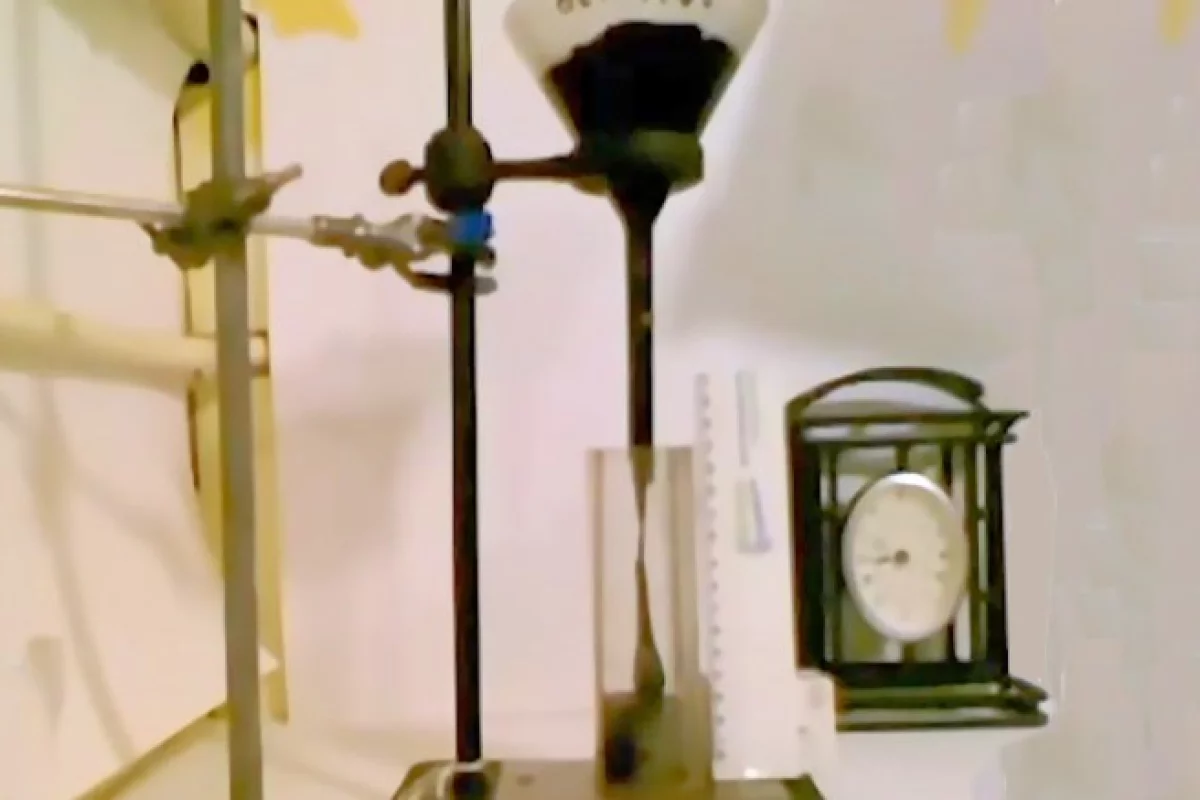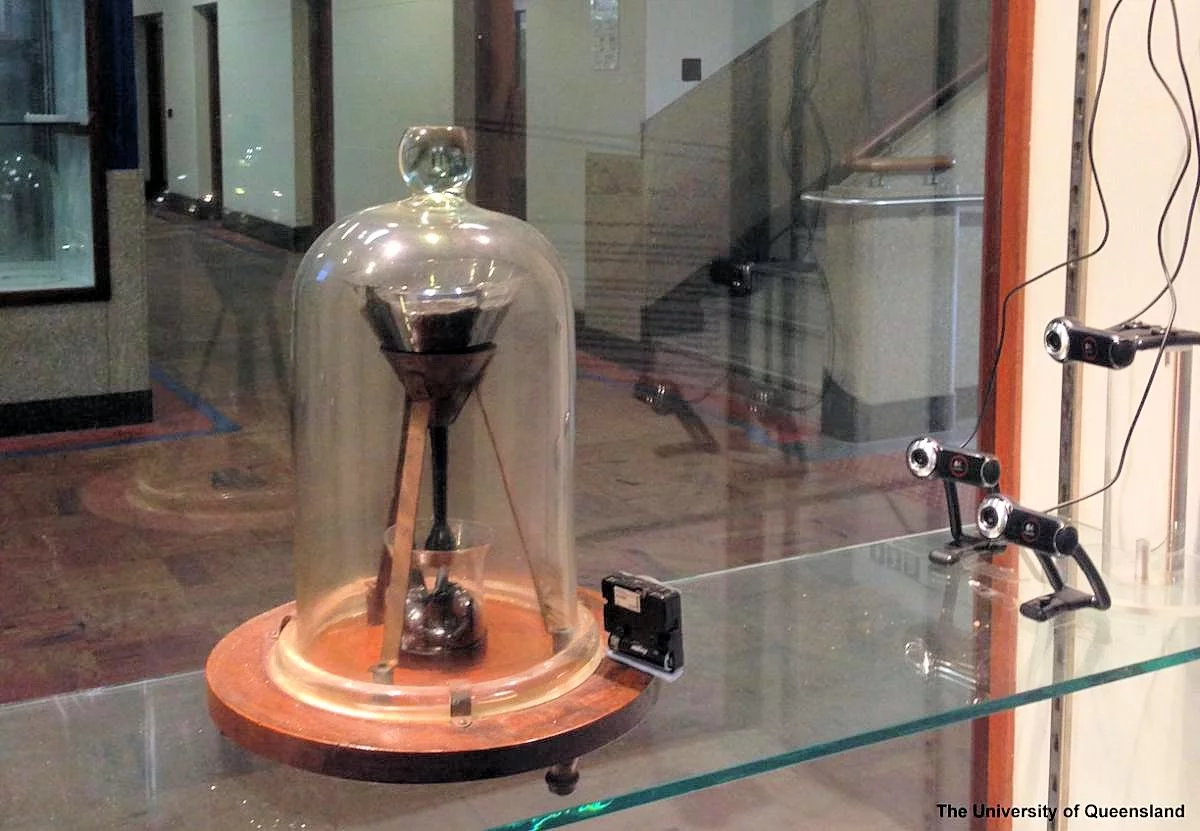Is pitch a liquid or a solid? It turns out that while it appears to be a solid at room temperature, it actually flows like a liquid ... a very, very viscous liquid. Why is this interesting? One of the world's longest running experiments, which began nearly 70 years ago at Trinity College Dublin, has now recorded the fall of a drop of pitch on video for the first time.
In the first half of last century, two groups of physicists, one at Trinity College Dublin and the other at the University of Queensland, independently decided to set up simple if slow experiments to test if pitch is solid or liquid. The Queensland experiment, which won the 2005 Ig Nobel prize for physics and holds the Guinness Book of World Records record for longest running laboratory experiment, has been running since 1927, while the Trinity College test was started in 1944.

Pitch drop experiments are simply long-term versions of a standard experiment used to measure the viscosity of liquids. As shown above, the Ford viscosity cup is a cup with a funnel-like structure at the bottom. It is normally used to measure the viscosity of paints based on the time required for a test sample to drain out of the viscosity cup.

Pitch, however, is a different matter. Produced along with charcoal from the destructive distillation of pine and other resinous woods, pitch is a polymer whose viscosity is sufficiently large that it appears to be a brittle solid. However, if subjected to a stress for a long period of time, it will flow in response. This makes pitch a good sealant and of particular value for optical polishing.
What, then, is the viscosity of pitch? It is hard to tell, both because the viscosity is so large, and because materials called "pitch" are not all the same. Both the Trinity College and the University of Queensland pitch drop experiments have resulted in drops of pitch falling free of the viscosity cup, but at the rate of about one drop per decade. The viscosity of pitch is in the neighborhood of 20-100 billion times the viscosity of water.
A drop of pitch from the Trinity College experiment has been recorded in the process of falling, as shown in the video below. Despite efforts by the Queensland researchers, none of the eight fallen drops have been observed to fall. A ninth is expected to fall later this year, and the apparatus is under continuous video and webcam surveillance (you'll need a good supply of popcorn for that one).
Sources: Trinity College Dublin and University of Queensland







